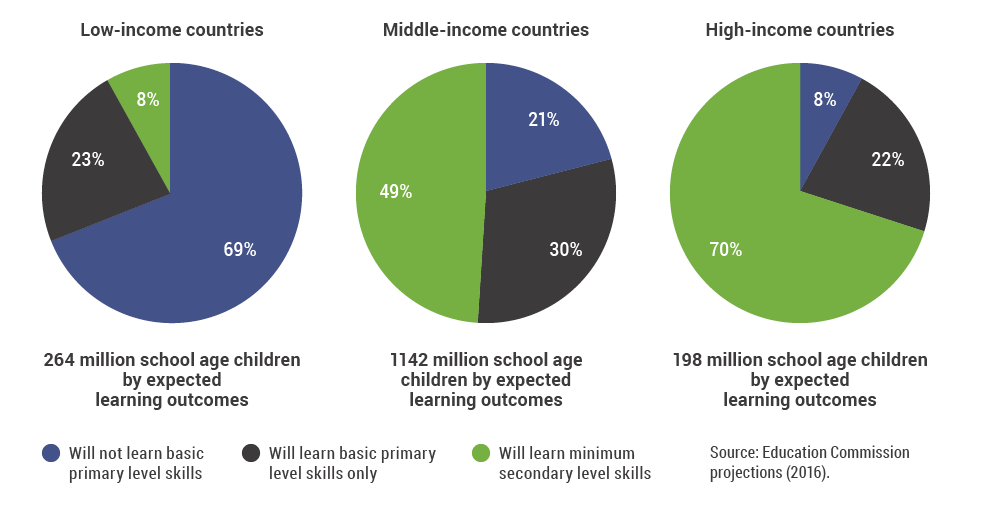Source: Education Commission projections (2016).
The learning benchmark for primary students is reach- ing at least level 1 on a PIRLS Grade 4 reading assessment or equivalent. This is used as an available metric, recognizing that actual learning is a much broader and more complex process. The learning benchmark for secondary students is reaching least “low” level on a PISA assessment or equivalent. Again, this is used as a proxy for learning in the absence of more comprehen- sive assessments.
The calculations are based on the assumption that all children and youth in primary and secondary school
in 2030 will have the same learning outcomes (i.e., the primary school pupils, when they reach adolescence, will have the same secondary school outcomes as their older peers did in 2030). The idea is similar to how the total fertility rate is computed for population projections. One takes the learning outcomes of dif- ferent ages in year X, and calculates what the learning outcomes would be if everyone of school-age completed their schooling with those learning outcomes. For fur- ther information, see the Commission team’s Analytical Background Paper.

